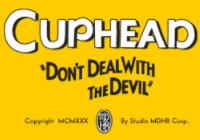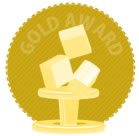Cuphead (Nintendo Switch) Review
By Renan Fontes  21.05.2019
21.05.2019

Originally released for Xbox One and Windows in 2017, Studio MDHR's Cuphead styled itself as a Microsoft exclusive in every respect. Come 2018, the title was ported to MacOS, giving audiences everywhere hope that the eclectic run and gun would be ported to other home consoles. In the wake of Microsoft and Nintendo's growing friendliness, Cuphead has, perhaps unsurprisingly, found a new home on the Nintendo Switch. Just as endearing as it was during its initial launch, Cuphead hearkens back to not only a specific point in western animation, but game design conventions as well.
Although Cuphead is a genuinely challenging experience, it is worth noting that its almost overwhelming reputation is not exactly indicative of the gameplay in execution. Impatience is certainly punished, and bosses seldom hold back, but the core gameplay offers Cuphead - and his cohort Mugman - more than enough tools to tackle any situation reliably. More importantly, this it a title that prioritizes mechanical understanding above all else.
So, as long as one is patient and takes the time to understand exactly what is challenging them, the difficulty will rarely scale too high. Of course, there are spikes here and there, but even said spikes can be overcome by studying a boss' pattern, and further grasping a mastery of the mechanics at play. Even then, complete mastery isn't necessary to reach the finish line. At least not until Expert mode is unlocked upon defeating the final boss.
Gameplay is split into two key sections: boss fights and run 'n gun levels. Boss fights are the main draw, and what the core mechanics are specifically built around. At its core, this is a boss rush from start to finish, pitting players against uniquely designed enemies. Cuphead can shoot in eight directions, dash in mid-air so as to avoid hazards or simply reach another platform, parry attacks or enemies as long as they're colored pink, and unleash EX shots/super moves which can be built up by either damaging enemies or pulling off successful parries. Notably, run 'n gun levels were added after the core concept was decided upon - which explains why there are so few of them - but they aren't any worse for wear.

All things considered, run 'n gun levels feel right at home as they are, for the most part, boss fights in their own rights; at least on a conceptual level. They have clear cut phases, actively offer combat challenges, and demand the same level of understanding one would develop from learning a boss fight. Cleverly, these are light on platforming, only really leaning into the genre in order to tuck away optional coins. As they are, they make for an important, and arguably necessary, change of pace from all the boss fights, ensuring that the title never runs its premise thin.
In a similar vein, boss fights are separated into two smaller subsets: the main boss fights which keep Cuphead on ground level where he has access to all his natural abilities and equipment, and auto-scroller battles which tuck Cuphead onto a plane and briefly turn the gameplay into something more akin to a shoot 'em up. Of course, the core mechanics are still very much in play, but there is a fundamental difference between a traditional boss like The Root Pack, and auto-scrolling bosses like Dr. Kahl's Robot.
Considering how short the overall experience is - clocking in anywhere between five and ten hours depending on a player's skill - it is ultimately for the best that there is so much variety at play. Even though the core mechanics never change, and the general level design is consistent throughout, the minor differences go quite a long way in keeping the experience not only flowing, but fresh from beginning to end.

For every boss, sans the final two, players can choose between two difficulties: Simple and Regular. As the name suggests, Simple offers a simplified version of any given boss fights, often allowing audiences the chance to see later phases of each battle in order to familiarize themselves with what is in store on regular. Worth noting, Simple actually does omit certain sections of boss battles, ensuring that the whole fight can't be mastered on an easier difficulty. It should also be stated that bosses aren't technically defeated unless they're beaten on Regular. Simple is just that: a simple approach to a boss. They're there so that anyone struggling can get a better grasp of both the controls and boss patterns so they can advance to Regular and fight each boss as they were intended.
All things considered, this is an intelligent design move on MDHR's part. Simple satiates the needs for an audience looking for a more relaxing experience while Regular caters to those who want to play Cuphead as it was intended to be played, along with maintaining a sense of progression that cannot be outmaneuvered by playing on a lesser difficulty mode. On that note, even if Regular seems too daunting when compared to Simple, Cuphead and Mugman are genuinely well equipped. By spending coins at Porkrind's Emporium, the brothers can purchase Charms and Weapons. The former are passive upgrades that change certain abilities or simply buff the playable character, while the latter changes the property of their guns.
For Charms, Porkrind sells: Heart, which bestows an extra hit point at the expense of dealing less damage; Smoke Bomb, which makes Cuphead and Mugman briefly invincible (along with invisible) when dashing; P. Sugar, which automatically parries once per battle; Coffee, which gradually fills up the super meter; Twin Heart, which adds an extra hit point upon Heart while also lowering damage output even further; and Whetstone, which makes parrying an attack in its own right. For Weapons, alongside the default Peashooter which is a standard gun that quickly fires in all eight direction, Cuphead can purchase from Porkrind; Spread, a gun that does a great deal of damage, but only at close range; Chaser, which fires out weak bullets that lock onto enemies without the need of aiming; Lobber, which drops down ball-like bullets onto enemies; Charge, which acts as a traditional charge up weapon that doesn't auto-fire ala Mega Man Mega Buster; and Roundabout, a gun that fires disc-like bullets that boomerang themselves back around.

While certain Charms and Weapons are, of course, better suited for different bosses and stages, there is no one "correct" way to tackle Cuphead. Any given build works and no piece of Equipment exists without purpose. The least useful is perhaps P. Sugar as parrying is an incredibly important mechanic which must be mastered sooner rather than later, but even it can have its uses, especially during the Mausoleum stages where parrying is all Cuphead can realistically do. Keeping the gameplay nice and varied, Cuphead or Mugman can equip two different guns at any given time. Weapons can be swapped on the fly during battles and pairing two vastly different Weapons together can go a long way in a particularly difficult boss battle. Charms themselves likewise offer plenty of variety as Smoke Bomb more or less turns the dash into a proper dodge and Coffee keeps the supers gradually coming.
This is to say nothing of the sheer level of care put into every single boss battle. Patterns and attacks are clearly telegraphed; phases are always neatly divided; and death, while frequent, rarely feels too punishing as bosses are designed to be cleared in just a few minutes. It can feel as though many of the fights boil down to trial and error, but that's only in regards to fully understanding what each boss attack does. It perhaps goes against conventional design wisdom, but starting over is so quick that there's really no harm in offering a challenge that requires quicker reflexes at all times.
The only time the game design starts to feel a bit less fair is during the penultimate stage which consists of a boss rush (which can or cannot be lengthy depending on certain circumstances,) but even then, the stage is more of an endurance match than it is unfairly designed. It can be exhausting getting to the boss proper after the boss rush, but so much is in control of the player that it's simply a matter of learning how to properly manipulate progression. Tying the whole package together is, of course, the visual style and music. Hand drawn and traditionally animated, the visuals are almost surreal in their presentation. This is an aesthetic that not only invokes a very specific sense of nostalgia, but does so while actually evolving its inspiration point. The visuals are beyond homage. They are the genuine article, something the soundtrack places quite a bit of emphasis on. MDHR's Cuphead is a love letter that consistently hits the right notes up until the very end.

Cubed3 Rating
Exceptional - Gold Award

Visually stunning and difficult in all the right ways, Cuphead is a testament to the importance of thought out game design. Every facet of the run and gun parts is built around giving the audience an experience unique to the videogame medium. Although this borrows quite heavily from a very specific era of animation history, its aesthetic goes beyond homage, coupling masterfully with gameplay that encourages mastery on every level. With some of the best designed boss fights this generation, a beautifully rich animation style, and impeccably fine-tuned controls, Cuphead stands out as not only one of the best indie titles on the Nintendo Switch, but one of strongest releases this generation, period.

![]() 9/10
9/10
![]() 0
(0 Votes)
0
(0 Votes)
 Out now
Out now  Out now
Out now  Out now
Out now  Out now
Out now Comments
Comments are currently disabled

 Sign In
Sign In Game Details
Game Details Subscribe to this topic
Subscribe to this topic Features
Features





 Top
Top

